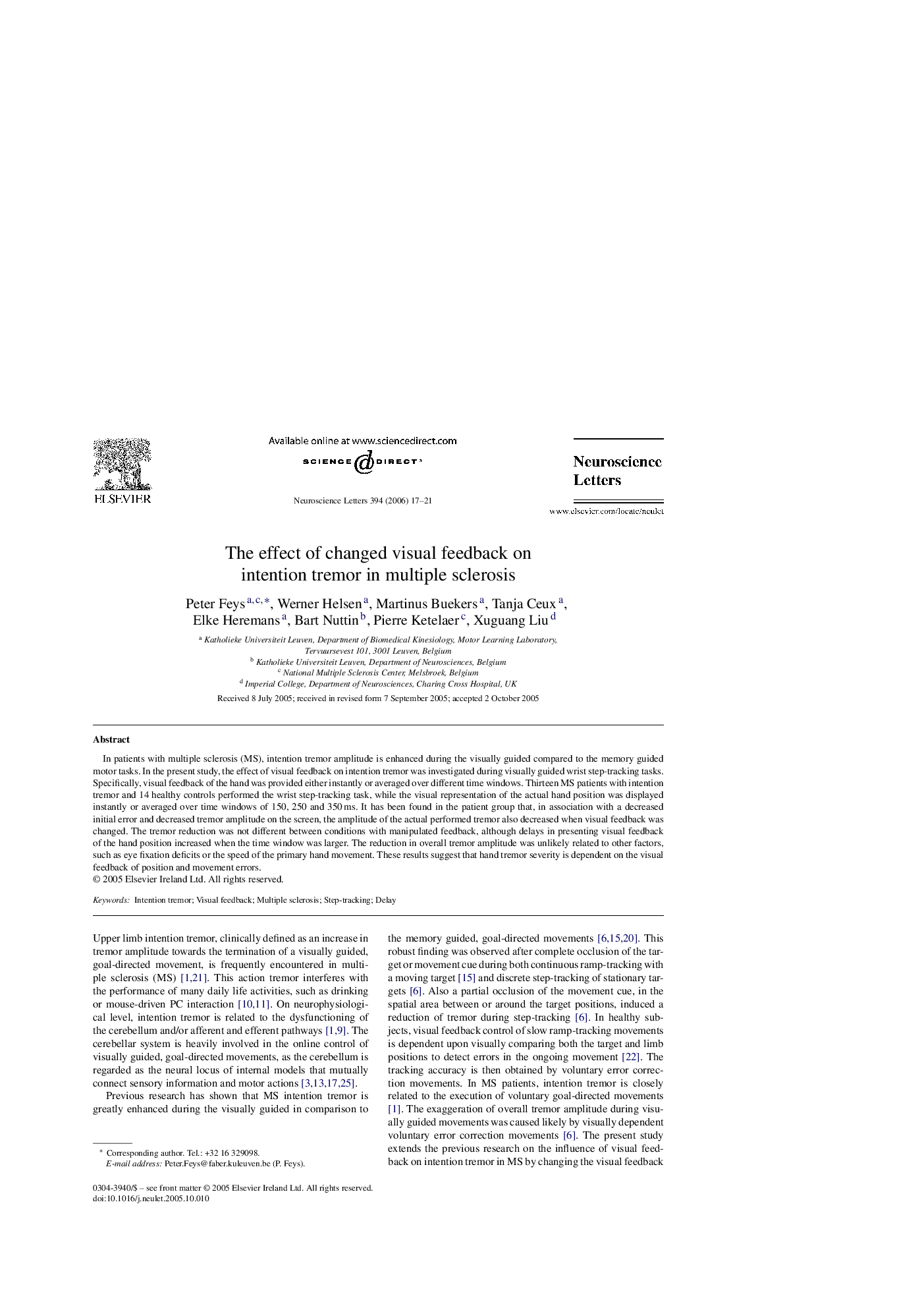| Article ID | Journal | Published Year | Pages | File Type |
|---|---|---|---|---|
| 4351188 | Neuroscience Letters | 2006 | 5 Pages |
In patients with multiple sclerosis (MS), intention tremor amplitude is enhanced during the visually guided compared to the memory guided motor tasks. In the present study, the effect of visual feedback on intention tremor was investigated during visually guided wrist step-tracking tasks. Specifically, visual feedback of the hand was provided either instantly or averaged over different time windows. Thirteen MS patients with intention tremor and 14 healthy controls performed the wrist step-tracking task, while the visual representation of the actual hand position was displayed instantly or averaged over time windows of 150, 250 and 350 ms. It has been found in the patient group that, in association with a decreased initial error and decreased tremor amplitude on the screen, the amplitude of the actual performed tremor also decreased when visual feedback was changed. The tremor reduction was not different between conditions with manipulated feedback, although delays in presenting visual feedback of the hand position increased when the time window was larger. The reduction in overall tremor amplitude was unlikely related to other factors, such as eye fixation deficits or the speed of the primary hand movement. These results suggest that hand tremor severity is dependent on the visual feedback of position and movement errors.
